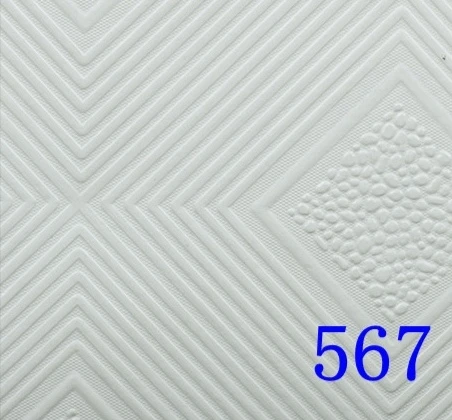Nov . 06, 2024 09:38 Back to list
pvc vs gypsum ceiling
PVC vs. Gypsum Ceilings A Comprehensive Comparison
When it comes to interior design and construction, ceiling materials play a crucial role in determining the aesthetics, functionality, and durability of a space. Two popular choices are PVC (Polyvinyl Chloride) ceilings and gypsum ceilings. Each material has its unique characteristics, benefits, and drawbacks. In this article, we will explore the differences between PVC and gypsum ceilings to help you make an informed decision for your home or commercial space.
Material Composition and Properties
PVC ceilings are made from a type of plastic, which makes them highly resistant to moisture, mold, and mildew. This makes them an ideal choice for areas prone to humidity, such as bathrooms and kitchens. Additionally, PVC ceilings are lightweight, making them easy to install and handle. They also offer a variety of designs, colors, and finishes, allowing for greater customization to suit individual tastes.
On the other hand, gypsum ceilings, composed mainly of calcium sulfate dihydrate, are known for their excellent fire-resistant properties. Gypsum boards, commonly used in suspended ceilings, can withstand high temperatures, making them a safer option in terms of fire safety. Gypsum also has soundproofing qualities, helping to reduce noise transmission between rooms.
Installation Process
The installation process for both materials varies significantly. PVC ceilings can be installed using a simple click-lock system or fastening them directly onto a structure, which significantly reduces labor costs and installation time. Their lightweight nature means less structural support is needed, allowing for greater flexibility in design.
Gypsum ceilings, however, often require more labor-intensive installation. They typically involve framing and may need additional finishing work, such as sanding and painting. This can lead to longer installation times and higher costs. However, the benefit of a gypsum ceiling is the seamless aesthetic that can be achieved, as they can be molded and shaped to create intricate designs without visible joints.
pvc vs gypsum ceiling

Maintenance and Durability
In terms of maintenance, PVC ceilings offer significant advantages. They are easy to clean and require minimal upkeep, as they do not stain easily. A simple wipe with a damp cloth is usually sufficient to maintain their appearance. Furthermore, their resistance to moisture means they do not deteriorate as quickly as gypsum in humid environments.
Gypsum ceilings, while durable, may require more attention to maintain their integrity. They can be susceptible to water damage if not adequately sealed, leading to sagging or mold growth over time. Although they can be repaired if damaged, it may require more effort and expense compared to PVC options.
Cost Considerations
Cost is another factor to consider when choosing between PVC and gypsum ceilings. PVC ceilings are generally more cost-effective upfront due to their lower material and installation costs. However, it is essential to consider the long-term benefits and potential savings in maintenance.
Gypsum ceilings, while initially more expensive due to installation complexities, can add significant value to a property through improved aesthetics and fire safety features.
Conclusion
Ultimately, the choice between PVC and gypsum ceilings will depend on your specific needs, budget, and design preferences. PVC ceilings are ideal for moisture-prone areas, while gypsum ceilings excel in fire safety and sound insulation. By weighing the advantages and disadvantages of each material, you can select the right ceiling solution to enhance your space effectively.
-
Quality Ceiling Trap Doors & Access Panels | Easy & Secure AccessNewsAug.30,2025
-
Durable Ceiling T Grid Systems | Easy InstallationNewsAug.29,2025
-
PVC Gypsum Ceiling: Durable, Laminated Tiles for Modern SpacesNewsAug.28,2025
-
Pvc Gypsum Ceiling Is DurableNewsAug.21,2025
-
Mineral Fiber Board Is DurableNewsAug.21,2025
-
Ceiling Tile Clip Reusable DesignNewsAug.21,2025







